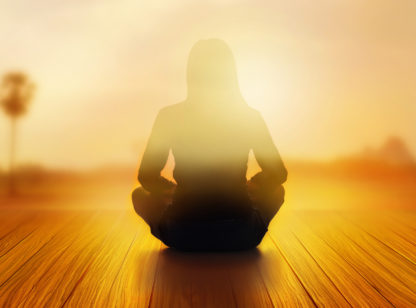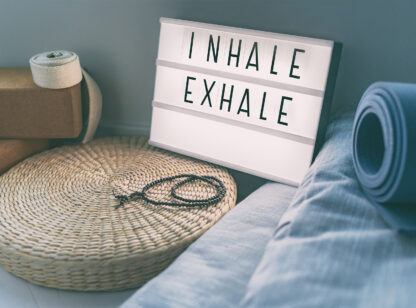 Sometimes the simplest task is the hardest. In the case of meditation this is true for many.
Sometimes the simplest task is the hardest. In the case of meditation this is true for many.
Meditation is simply defined as the ‘cessation of fluctuations of the mind.’ There is enough statistical research supporting this, and we should all be taking time in our day to have uninterrupted quiet time focusing on the breath and quieting the mind. So, why is this so difficult?
There is a reassuring story for all of us of an American woman visiting India who had the honor of meeting the Dali Lama. The woman asked “Why is it so difficult for Americans to meditate?” The Dali Lama responded, “Americans? Who says this is the case? It is a task of perpetual difficulty for us all!” Even the Dali Lama has difficulty quieting the mind.
We have 60,000 to 90,000 thoughts a day. 90% of these were in our consciousness from the day before. Much of our thought patterns are formed at an early age. By the age of 4- 5 years old our core thought patterns are well formed. Additionally, our habits of thinking and breathing are unified. Much of the way we learned how to breathe was learned very early on.
Based on this profound information, how do we start clearing the mind to welcome new positive thought patterns? One can take a first step by spending time thinking about our thoughts, and this type of contemplation can only happen in solitude. A goal of meditation is to unite the breath into this practice and remain focused on a single-pointed sensation of the breath. If the mind wanders 1,000 times, bring it back 1,001 times. Obviously, much patience is required.
There are many documented studies supporting the benefits of meditation which include: increasing immune response and attention span; relieving anxiety and depression; and promoting the neuroplasticity of the brain. When this happens, there is growth in brain cells and parts of the mind open up to create mental engagement.
Sticking to a practice of simply carving out 5 minutes a day for uninterrupted quiet time, with eyes closed, active breathing engaged, upright posture initiated and hands at rest with palms face up can facilitate a profound experience. Palms facing up is important because it means we are in “receiving mode.” This higher receptivity helps initiate a relaxed state. Taking this daily path quiets the mind and we realize we are merely the observer of our thoughts.
Over a decade ago, I attended a 10-day silent meditation retreat. The meditation technique was Vipassana which means “to see things as they really are.” There are over 120 Vipassana centers around the world with one center conveniently located in Twentynine Palms. After 10-days of not speaking and immersing oneself into this practice of self-observation, it was impossible to see the world around me in the same light. Most experiences we have daily are born of wanting less or more. Centering oneself is called equanimity. There is a center point between the constant push and pull in our lives, and attaining more center balance is the desired result of meditation.
Whether it is 5 minutes a day or 10 days of simply observing the simple quality within, meditation can help us experience tremendous expansion and calming of the mind and the breath.















































Comments (0)